Driftpoints: Assemblages (2025)

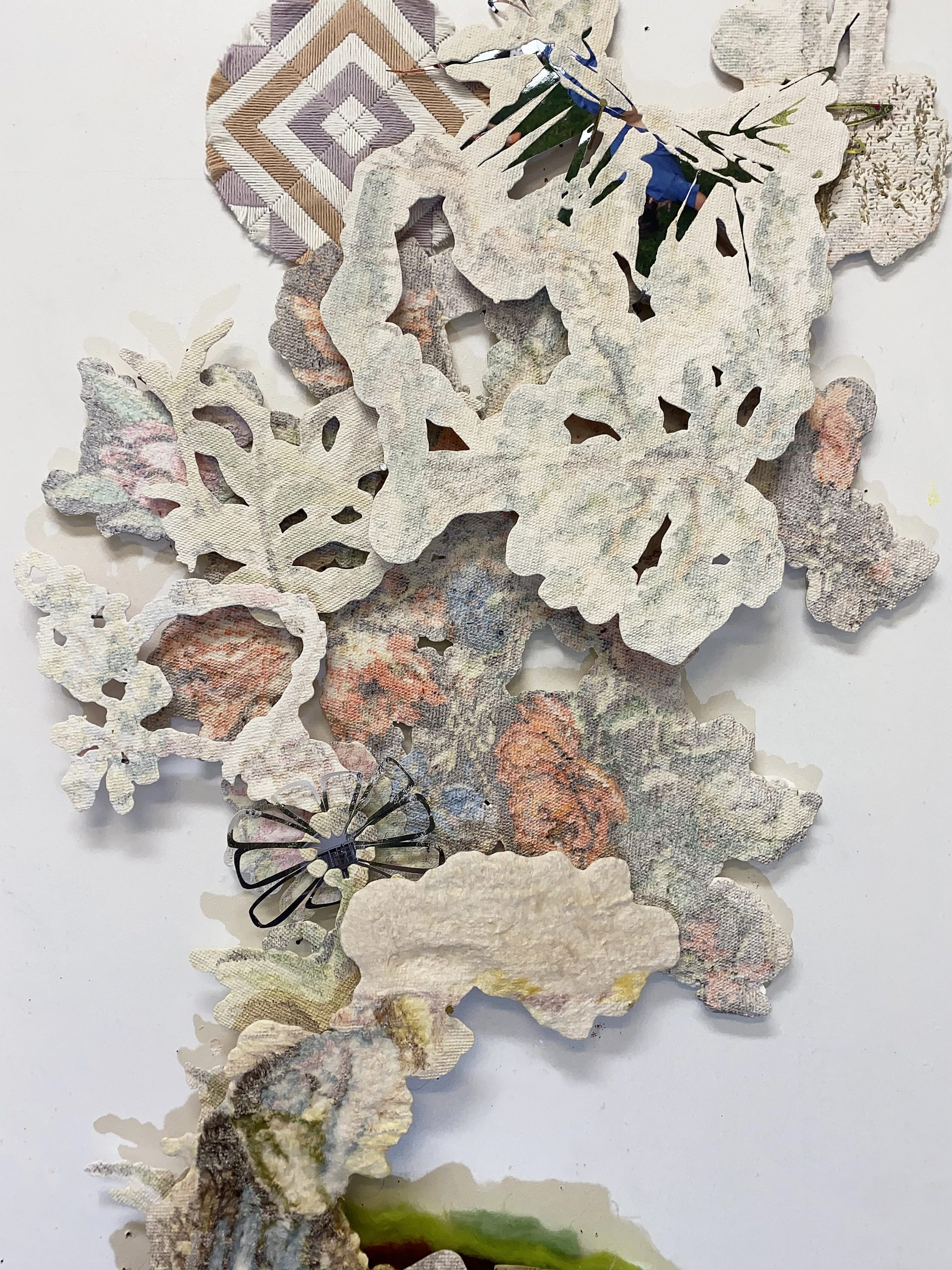
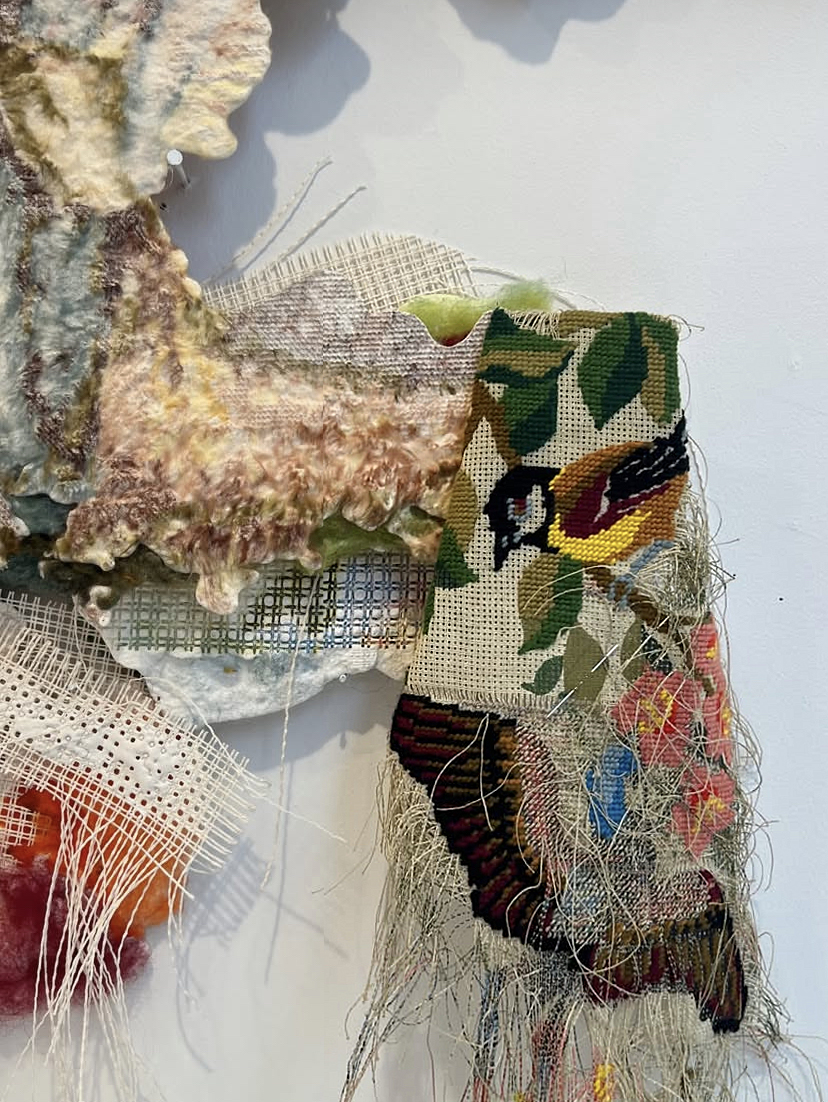
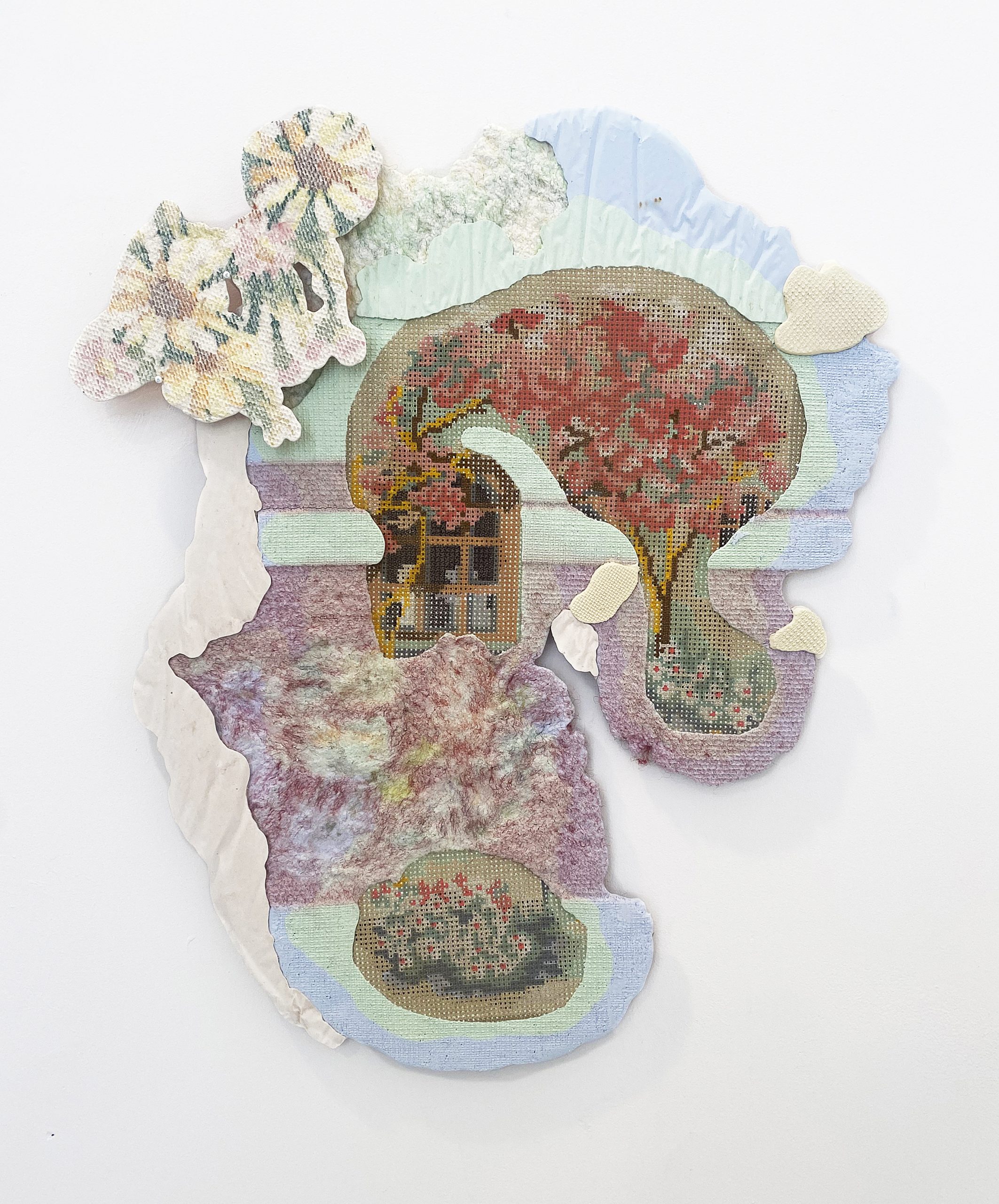
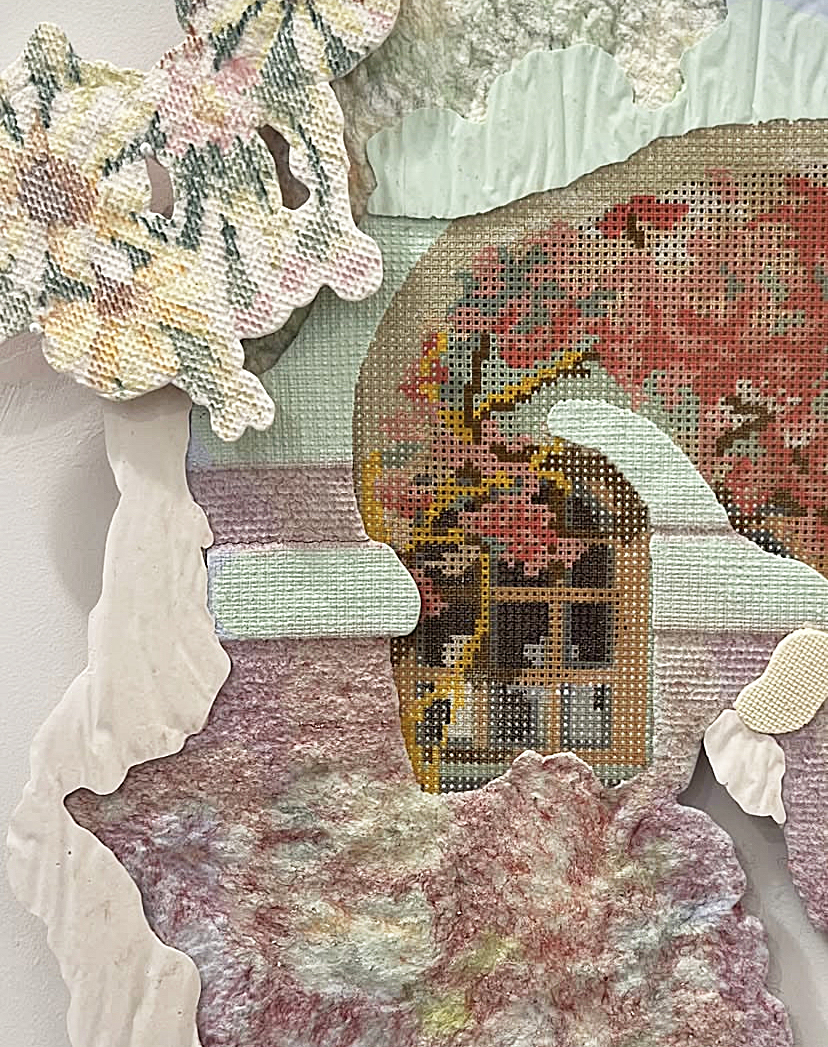
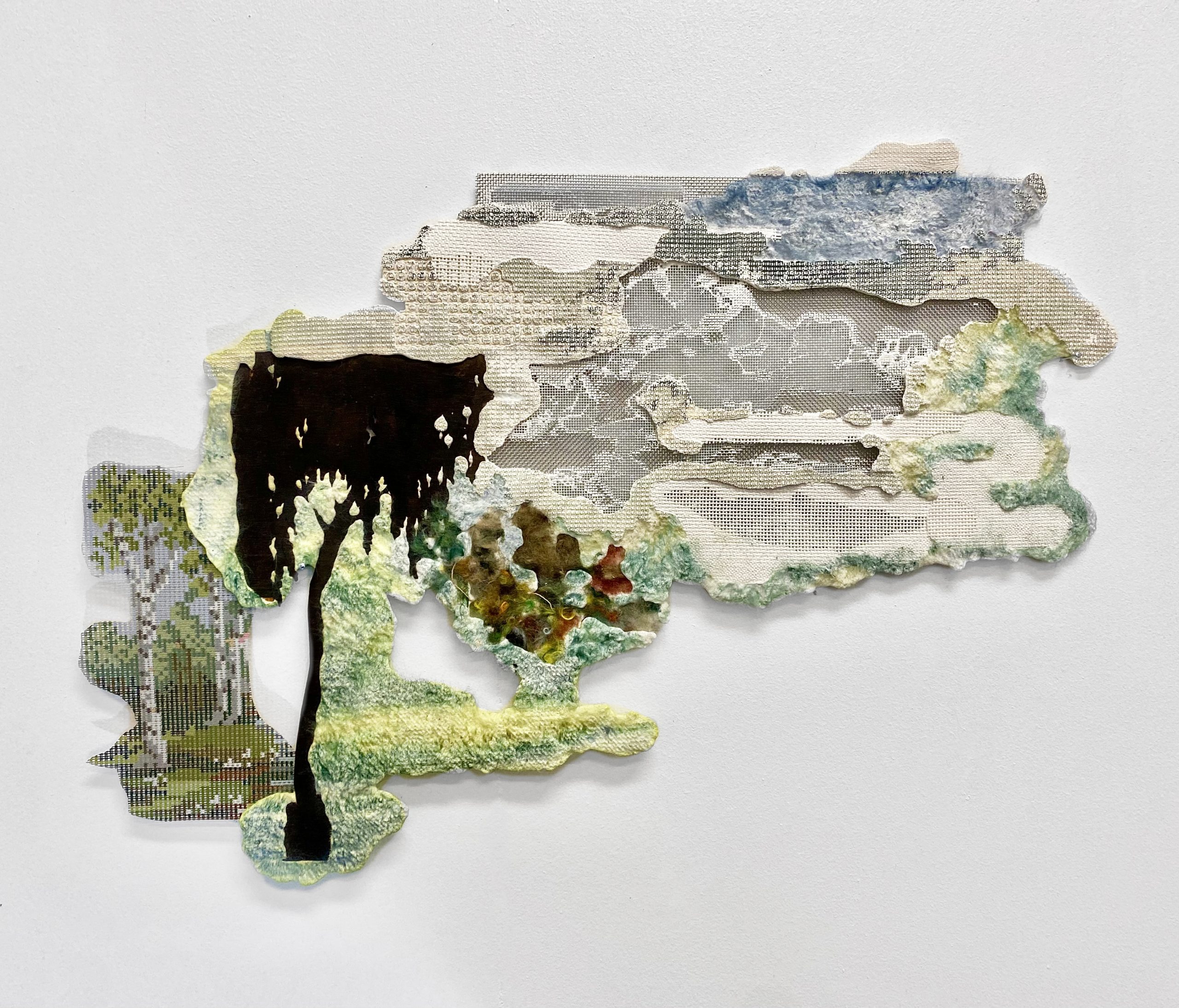
4 / 6
Pastoral Extraction (2025), Found needlepoint printed on resin, mesh, and pigment
Details
Maggie Cardelús’s ongoing work with vintage needlepoint begins with close attention to its quiet repetitions—grids, coded patterns, and proto-algorithmic logic. Since the 19th century, domestic needlework has combined strict stitching techniques with idealized pastoral imagery, enforcing discipline while offering space for meditation, care, and visible labor. Cardelús disrupts this dynamic by unraveling both the structural logic and visual language of the medium. In one piece, a lone figure adapted from The Gleaners appears near the horizon—small, bent, and quietly absorbed—suggesting a deeper scene beneath the surface, where labor, time, and memory gather without fully revealing themselves. She introduces ruptures, asymmetries, and intuitive gestures that loosen the pattern’s grip and disturb the pastoral’s soothing facade. The logic she follows is no longer algorithmic but spatial and affective, built from accretion, drift, and painterly improvisation. In doing so, she imagines a different unfolding of history—one where invention, touch, and emotional resonance take precedence over mathematical grids and control.
Through this speculative unmaking of pattern and automation, Cardelús enters into material dialogue with the anonymous makers whose hands shaped the originals. Her interventions do not erase, but extend their labor-surfacing submerged narratives and reanimating cultural techniques once constrained by utility or invisibility. By incorporating cut family snapshots, she draws a line from the mechanical flattening of stitched patterns to that of the photographic image, and onward to the algorithmic compression of digital technologies. Guided by process, she transforms these overlooked materials into unstable, resonant forms, holding space for memory, emotion, and invention as ways to rethink what making can mean.
Her work unfolds along the edges: between craft and art, repetition and rupture, presence and absence, handwork and machine work, visibility and obscurity, reproduction and improvisation, the personal and the collective, structure and drift. These thresholds are not only conceptual but also material: seams, cuts, rough edges, and frayed borders don’t just illustrate the tensions of care and control—they make them tangible, allowing the artwork to communicate the complex realities that shape both visual culture and domestic labor. In tracing and troubling these boundaries, Cardelús insists on making as a form of resistance—an act that reclaims space for complexity, subjectivity, and deep, slow, felt ways of knowing.